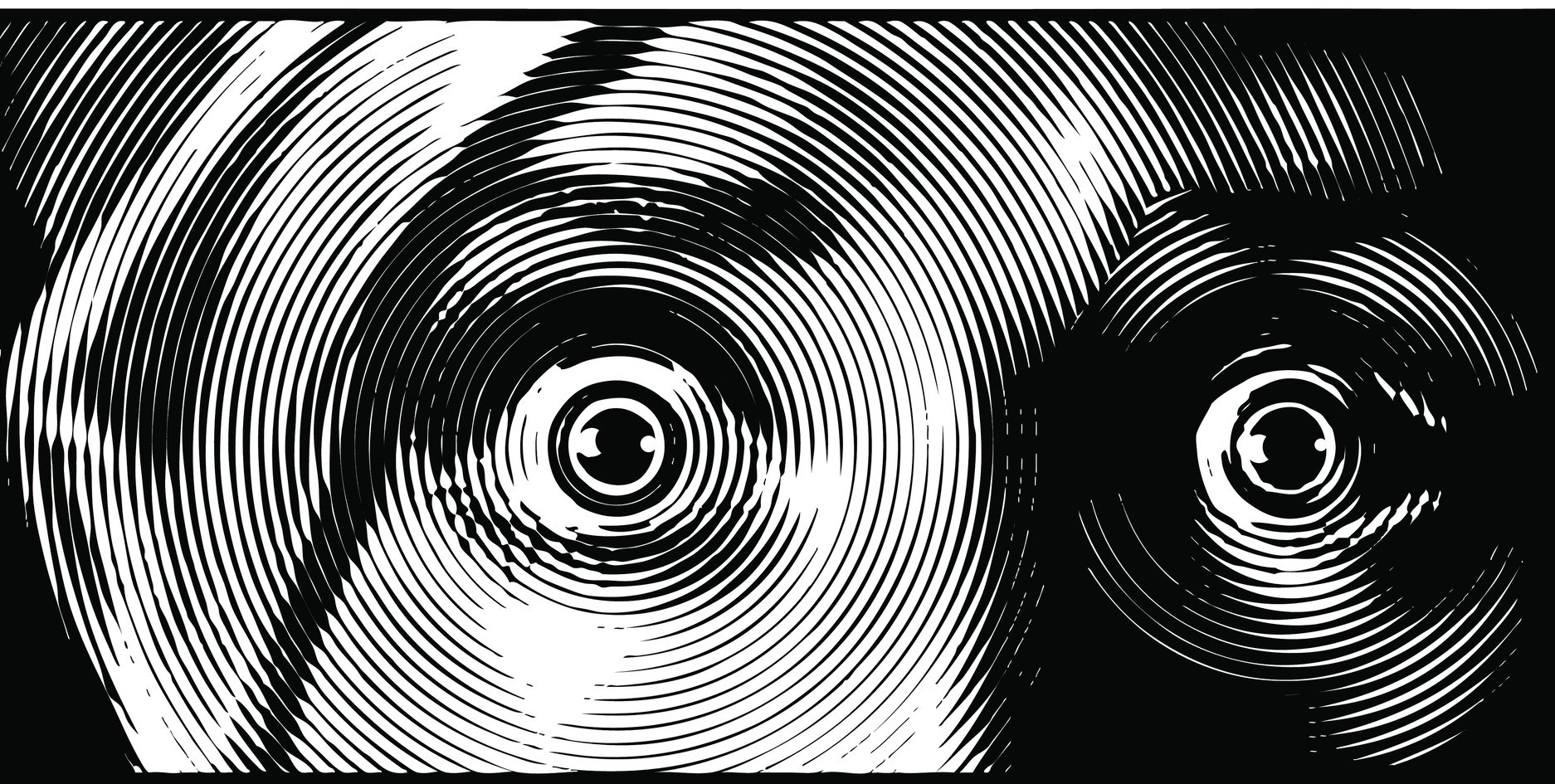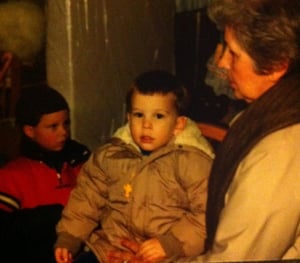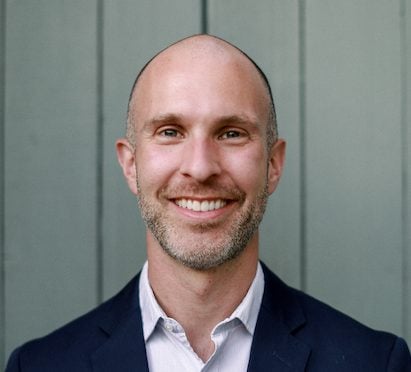
I am afraid. On a daily basis--let’s be real--on an hour by hour basis, I find myself suppressing this fear. By the time this article is published over 2 million people will have been diagnosed with COVID-19. The CDC estimates that nearly 100,000 to 250,000 Americans might die from the coronavirus. I don’t know if I am more afraid of the magnitude of those numbers or of the paralyzing uncertainty I feel from the size of their range. Infrastructure and institutions that I have taken for granted my entire life to safeguard and protect myself, my loved ones, and the general public are failing right before my eyes. In the four weeks prior to publication, more than 20 million Americans filed for unemployment; averaging to 5 millions claims per week--the previous weekly high had been 695,000 set in the early 1980s. Things will get worse before they get better. How much worse? No one knows. The stories of human suffering in Italy, Iran, and China--some of the hardest hit--break my heart as loved ones die alone, bodies pile up in makeshift morgues, and under-protected healthcare workers collapse in exhaustion.
When fearing fear feels like our only option
At the time of Franklin D. Roosevelt’s first inaugural address in 1933, the world was deep in the throes of the Great Depression precipitated by the Wall Street Crash on October 29, 1929--the first “Black Monday.” In his address, FDR asserted in a strong booming voice, “...[T]he only thing we have to fear is fear itself.” Why did he say this? Because fear can incapacitate us, handicapping our resourcefulness. He went on to describe this type of fear as “...nameless, unreasoning, unjustified terror which paralyzes needed efforts to convert retreat into advance.”
Hearing this quote reminds me of my 98 year old grandmother, with whom I spoke on the phone this past weekend. Not only is she navigating the current COVID-19 pandemic and has dealt with the financial crisis of 2008 and 9/11, but also she has navigated every global crisis in between starting with the Great Depression and World War II. (She was 12 years old when FDR gave his famous address.) Having the benefit of 20-20 hindsight, it might not strike us as odd to describe the fear surrounding the Great Depression as nameless, unreasoning, and unjustified terror. Staring into its gaping maw, I imagine this emotion felt entirely appropriate.
This emotion feels entirely appropriate now.
Resilience: The antidote
Enter resilience.
The Oxford Dictionary defines resilience as
- the capacity to recover quickly from difficulties; toughness.
- the ability of a substance or object to spring back into shape; elasticity.
And the Merriam-Webster Dictionary defines it as
- the capability of a strained body to recover its size and shape after deformation caused especially by compressive stress.
- an ability to recover from or adjust easily to misfortune or change.
All four of these definitions buoy my spirit. Collectively they begin to fire up my resilience.
How did the “Greatest Generation” respond to the Great Depression? By thinking differently. FDR implemented economic reform via his New Deal program, which channeled a counterintuitive economic principle championed by John Maynard Keynes--the government needs to produce more!
How did they respond to World War II--a worldwide catastrophe in which 75 million people died, 40 million of whom were civilians? Everyone served. Via enlisting; rationing consumption of metal, rubber, and fuel; everyone doing their part to turn the wheels of the economic machine of the industrial war complex. My own grandmother was launching her career in Washington, DC when she heeded the request to serve, leading a team of about 200 secretaries who triaged a torrent of information as part of the Economic Board of Warfare, and my grandfather enlisted and sailed off to the jungles of the Philippines.
Thankfully resilience can be learned--it is a skill, a behavior, even a way of being.
This is resilience. Rallying, adjusting, pivoting, responding to the compressive stress in order to take a new shape that is a more appropriate fit for the crucible moment. This compressive stress can feel excruciating, as if it is squeezing the very life out of us, yet it can leave us stronger than we were before. However, we must be intentional about the new shape we are taking. This is how I think of resilience--a responsive agility that intentionally adapts to the compressive stress to form me into something better, stronger, and more adept. I cannot control the situation, but I can control my response to it and have a say in how the outcome affects me. I cannot control the floundering healthcare infrastructure nor prevent people from dying, yet I can practice social distancing, good hygiene, and a calming, centering presence for myself and others.
“Psychologists define resilience as the process of adapting well in the face of adversity, trauma, tragedy, threats or significant sources of stress…” Adversity, trauma, tragedy, threats, or significant sources of stress sound like a pitiful understatement right now--we are in it. Why is resilience important? Potentially we are answering the obvious, but it helps us survive and even thrive. Thankfully resilience can be learned--it is a skill, a behavior, even a way of being.
The resilient organization and the adaptive leader--it’s complicated!
This moment of extreme uncertainty is an unprecedented experience for most of us--with the exception of those who are in their 90s. To navigate this uncertainty, we need resilient organizations and leaders.
Can organizations be resilient? Absolutely! Hogan in Personality and the Fate of Organizations posits that organizations have personalities stemming from the behaviors and personalities of its leaders. It follows that we need resilient leaders who can navigate the turbulence we are all experiencing due to the COVID-19 pandemic. These leaders can help organizations and individuals process, react, and proactively adjust to the impact on the economy, our communities, and personal lives. We need leaders who can strengthen the resilience of the organization.
The catch is few leaders have had experience leading in times of crisis. Fewer--if any--have led in crisis as intense as what we are currently facing. Thus, they are learning as they go.
In The Practice of Adaptive Leadership, Heifetz describes the temptation to view leadership challenges as technical problems--a “black and white” problem that has a right approach and a wrong approach. However, the majority of leadership challenges are a hybrid of “adaptive” challenges--challenges that require learning new skills, shifting behaviors, taking new world views by re-mapping the mental model and heuristics of the individuals who comprise the system--and technical problems.
Heifetz notes that trying to solve adaptive challenges with technical approaches is folly. Adaptive challenges require the leader to extricate themselves from the day-to-day, minute-to-minute issues, carving out the reflective time to remove themselves from “dancing on the dance floor” to “get up on the balcony” so they can observe the pattern of the dance. In other words, instead of being a reactive cog in the machine, step back and observe the movements of the machine as a whole, as a system. Realize that the system is perfectly designed to produce the results it is producing. Realize that the system has a change resistance, an immunity to change (a blog post for another time about the work of Kegan and Lahey). If the leader wants different results, they need to change the system. Once on the balcony, the leader will need to determine how the “line of dance” needs to shift on the dance floor. Then they need to get back on the dance floor and rally others in the organization to see the need for change, acutely realizing and experiencing the pain of not changing, of letting the system operate as is. Then the change initiative gathers momentum. Mindsets and behaviors change. Then the system adjusts.
Strengthening the resilience of the organization is an adaptive challenge, and leading through an intense crisis is both a technical and adaptive challenge. In other words, this is an extremely complex and difficult learning journey for the leader, when time is of the essence.
Enough of the organizational psychology-speak. What’s a leader got to do?!
Enter coaching.
Via coaching, a leader can explore how they can take their resilience to the next level so they can do the same for their team, eventually cascading this throughout the organization.
The International Coaching Federation defines coaching as “partnering with clients in a thought-provoking and creative process that inspires them to maximize their personal and professional potential.”
Jenny Rogers, an eminent UK-based coach who authored the foundational coaching text Coaching Skills: A Handbook, defines coaching as “...a partnership of equals whose aim is to achieve speedy, increased and sustainable effectiveness through focused learning in every aspect of the client’s life. Coaching raises self-awareness and identifies choices. Working to the client’s agenda, the coach and client have the sole aim of closing the gaps between potential and performance.”
In other words, coaching expedites the leader’s ability to learn needed technical skills and unlock their resourcefulness as they deepen their capability to navigate adaptive challenges.
Via coaching, a leader can explore how they can take their resilience to the next level so they can do the same for their team, eventually cascading this throughout the organization. Thus, shifting the resilience of the organization itself.
Leaders can then, in turn, coach others in the organization. Instead of telling them what they think they should do, they coax out the resourcefulness and resilience of others by unlocking the individual’s ability to approach the challenge in more skillful ways, integrating a more comprehensive, insightful mental model of the system at play. The result: the leader empowers others in the organization, cascading the increased resilience.
Okay, so you get that a leader develops their ability to deal with adaptive challenges, such as increasing the resilience of an organization in times of crisis, through coaching. And you are looking for some resources to build your technical skills as a leader now! Let me suggest you add Rock’s SCARF model to your toolkit, and then let me point you to this list of resources CultureAmp is collating to help leaders increase the resilience of their organization.
The essence of the SCARF model is we are hardwired to move away from threat and toward reward. The current COVID-19 pandemic is creating threat on unprecedented levels. To counteract the threat, leaders need to validate the Status of the individual, establish Certainty for them, provide Autonomy over how they do their work and involve the individual in outcomes affecting them, help the individual feel a sense of Relatedness to you and others, and ensure the individual experiences Fair treatment of themselves and others.
How can we use the SCARF model to understand how threat can stifle the resilience of an individual? We identify the sources of threat via the lens of the model and then move to mitigate them. As an example, if an individual worries they might lose their job in these uncertain economic times, then the SCARF model would indicate:
- Status: Loss of status as they lose the identity of being gainfully employed and potentially take on a stigma associated with being unemployed.
- Certainty: Loss of certainty by not being sure how to pay bills.
- Autonomy: Loss of control over present events, feeling at the whims of the inanimate chaotic economy and terroristic microscopic invader that is COVID-19.
- Relatedness: Loss of status by no longer being part of the organization that had employed them.
- Fairness: Feeling like they were treated unfairly as they realize others still are gainfully employed, especially with their previous employer.
The resilient individual
This begs two questions. How do we remain resilient as individuals? And, how do we strengthen our resilience?
First, you can assess your life in four dimensions: physical, emotional, mental, spiritual. Ask yourself the following questions:
- What is working? (So you can keep doing it and do even more of it.)
- What habits and practices do you have?
- What is not serving you?
Then, set yourself up to strengthen your resilience by asking and acting upon these questions:
- What is one thing you could shift now?
- What is going to make it hard to make the shift?
- What is the cost of not making that shift?
- Who and what could you enlist to support you making this shift?
If you are looking for starter suggestions, the American Psychological Association recommends the following:
- Build your connections by prioritizing relationships and joining a group.
- Foster wellness by taking care of your body, practicing mindfulness, and avoiding negative outlets.
- Find purpose by helping others, being proactive, moving toward your goals, and looking for opportunities.
- Embrace healthy thoughts by keeping things in perspective, accepting change, maintaining a hopeful outlook, and learning from your past.
- Seek help.
You have been through your fair share of hardship and tragedy. Because of it, you are resilient too!
My journey to resilience
You might be wondering who on earth I am to talk about resilience. I grew up in a traumatic environment. Thinking I was broken, I searched for information and resources to “fix” myself. Along this journey, I realized everyone is broken in their own way--we all have experiences that have left us feeling unwanted, lacking, or other. As I grappled with this realization, I yearned to share what I have learned with others, making my life’s mission to enable people to maximize their full potential, living their most meaningful life--this is how each one of us will have our greatest impact during our relatively brief journey on this planet. I strive to be an expert in human development and to share that knowledge with others.
 My journey has been one of abuse, loss, feeling like I was not good enough, and being different than others in my community. My father physically abused me regularly as a young child. When my parents divorced when I was 7 years old, it felt like my world was being torn apart. The next several years, my older brothers and I spent countless hours in the waiting rooms and offices of psychiatrists and saw our fair share of family courtrooms. I grew up in a controlling, authoritarian ultra-religious environment that has been featured many times in investigative journalism pieces as a cult by local news stations. It was not uncommon on a random Sunday for a schism to occur during the church service, resulting in a material population of the congregation leaving. In this environment, we ostracized--think of the Amish practice of shunning--members who left, cutting off all communication. (It was common for parents to cut pictures of their children out of family photos if the children left the community.) Considering the school I attended kindergarten through the twelfth grade was composed entirely of children whose parents were members of the church, this was a big deal--it meant you lost a lot of friends in the blink of an eye. To cap it off, this community was extremely patriarchal, so I was “other” because my brothers and I were being raised by a single mother. Striving to be normal, I learned resilience. I watched, learned, listened, mimicking and modeling human behavior to refine my understanding of how to operate “normally.” Books and academics--additional sources of knowledge--were my solace, my escape.
My journey has been one of abuse, loss, feeling like I was not good enough, and being different than others in my community. My father physically abused me regularly as a young child. When my parents divorced when I was 7 years old, it felt like my world was being torn apart. The next several years, my older brothers and I spent countless hours in the waiting rooms and offices of psychiatrists and saw our fair share of family courtrooms. I grew up in a controlling, authoritarian ultra-religious environment that has been featured many times in investigative journalism pieces as a cult by local news stations. It was not uncommon on a random Sunday for a schism to occur during the church service, resulting in a material population of the congregation leaving. In this environment, we ostracized--think of the Amish practice of shunning--members who left, cutting off all communication. (It was common for parents to cut pictures of their children out of family photos if the children left the community.) Considering the school I attended kindergarten through the twelfth grade was composed entirely of children whose parents were members of the church, this was a big deal--it meant you lost a lot of friends in the blink of an eye. To cap it off, this community was extremely patriarchal, so I was “other” because my brothers and I were being raised by a single mother. Striving to be normal, I learned resilience. I watched, learned, listened, mimicking and modeling human behavior to refine my understanding of how to operate “normally.” Books and academics--additional sources of knowledge--were my solace, my escape.
Life has a way of throwing countless opportunities at us to strengthen our resilience. My list of opportunities goes on and on: Collecting 25 stitches in my face as a child, including one in my lip without Novocaine, breaking my collar bone, dealing with vestibular migraine in high school leaving me unable to keep my balance for nearly three months, being told by my first employer they didn’t think I was a fit and giving me three months to find a new job, being cut off by my mother and friends when I left the community I grew up in at the age of 28 and then moving from Pittsburgh--the only home I had known--to San Francisco, switching from a career in accounting to leadership development 9 years after college, DNF-ing (i.e, did not finish) on my first half Ironman because I did not finish the swim leg under the time limit, getting hit by a van cycling home from work, coping with diarrhea on my first ultramarathon, missing qualifying for the Boston Marathon because the race course was mis-marked 1.5 miles in...the list goes on. (As I know yours does too.)
These experiences are all gifts. They are mine. I have learned to treasure every single one of them because through them I have been forged. I am resilient.
You have been through your fair share of hardship and tragedy. It is the shared human experience. Because of it, you are resilient too! You can strengthen your resilience--we all have room to strengthen it more.
What are some of your resilience practices? I imagine you have far more of them than you give yourself credit for. Just the act of reflecting on what practices we have can boost our resilience.
What are some of my current resilience practices? (As you read this list, bring to mind your practices, both the intentional and the unconscious.)
I have a daily meditation practice, which I use to figuratively ground myself, visualizing myself as a quiet rock sitting in a stream effortlessly diverting its flow and then as a tall strong bamboo flexing in the wind. After 15 years of dormancy, I have rekindled my spiritual practice over the last year--thanks to books and podcasts by Rich Roll, the ultra-endurance athlete, and Mark Nepo, the poet and student of all religions and spiritual practices. I have a journaling practice that includes goal setting, prioritization, and reflection for the day, week, and quarter, coupled with listing three things I am grateful for each day. I find physical and social connection in the movement of running and CrossFit and draw on the restorative power of nature by escaping into the woods for a trail run. I have surrounded myself with loved ones--my wife, her family, and our friends. I commit myself to reading about things that inspire me, such as the human mind and human development, and find deep meaning in my work. I have empowered myself with knowledge and skills by getting an MBA, pursuing a coaching certification, receiving Community Emergency Response Training as a way to give myself a sense of control and means of giving back while living in an area prone to wildfires and mudslides, and training my body and mind via endurance athletics. I have diligently expanded my boundaries through travel via a humanitarian trip to Malawi, travelling in India and Thailand solo for 3 weeks, and canvassing the globe for business travel and on holidays with my wife.
Finally, I often remind myself of how I have been resilient in the past. You see, the above is not enough. It is a constant battle, a ceaseless effort just to maintain my resilience, let alone to strengthen it.
What is your journey to resilience?
Your goal need not be to “go from 0 to 100,” building your life’s worth of resilience practices at one time. Ask yourself what do you need now in this moment? What is the best you can do now? Maybe that is as simple as finding a way to quiet your inner critic telling you that you are a terrible parent as you grapple with the new reality of working from home while helping your children get through their school work (school work which you had to design after your kids went to bed). Maybe it is giving yourself the permission and grace to have a good cry, releasing your bottled up fear, frustration, and fatigue.
Your life’s journey is unique. Therefore, your journey to resilience will be too. If you are wondering where to start, remind yourself of how you have been resilient in the past. Sit with that for a while.
Your experience is unique, yet there is a shared human experience. Now more so than ever. No one can escape the impact of the COVID-19 pandemic. It is global and local in every way. There is something beautiful about that shared human experience. We will get through this together--I choose to believe that.
While I am an optimist--that is part of my resilience toolkit--things are nearly guaranteed to get worse before they get better. More will get sick, more will die, families will be torn apart with grief, social distancing and sheltering in place will strain the mental health of many, local business will be devastated, and the economy will take a massive hit, possibly deeper than anything we have seen before--unless, like my grandmother, you have lived through the Great Depression.
Be resilient! I will be resilient, that is my commitment to you. Make that commitment to yourself. Make that commitment to your community. Make that commitment to those whom you love and lead. “Do not go gentle into that good night!”
FDR in his first inaugural address in 1933 did not naively brush away the reality of the situation, blithely dictating one ought not to feel fear. While the second sentence of his address was “[t]his is preeminently the time to speak the truth, the whole truth, frankly and boldly,” he followed it by saying, “Nor need we shrink from honestly facing conditions in our country today.” Yes, honestly face these conditions as we stare into the cruel jaws of the unknown and then “convert retreat into advance.” Stand and be resilient! Fight.



